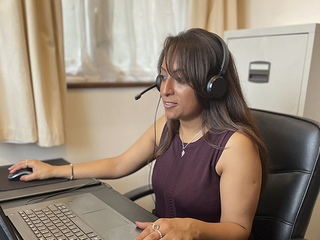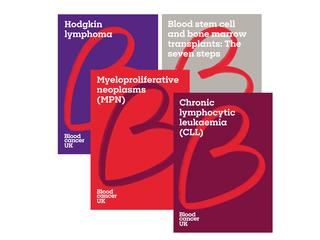Testing for ET
You will need tests to decide if you have essential thrombocythaemia (ET). If your doctor confirms that ET is the right diagnosis, you will also have tests to monitor the ET and manage your risk of developing blood clots.
Tests for diagnosing ET
ET causes your body to produce more platelets than it needs. This leads to a high platelet count showing up in blood tests. Platelets are the blood cells that stop bleeding and bruising.
In ET, you would expect to see a platelet count that stays high over an extended period. But there are other diseases that cause high platelets too. These include other types of cancer, infections, iron deficiency (problems with storing iron) and inflammatory conditions like rheumatoid arthritis. So you will need tests to check if ET is the right diagnosis.
You will also have tests to look for genetic changes (mutations) that suggest you have ET. We have more information about these changes on our page what is ET?
Here are some of the tests you may have to confirm a diagnosis of ET:
Full blood count (FBC)
A full blood count or FBC is a simple blood test which measures how many of each type of cell there is in your blood. A sample of your blood is analysed by an automated counter.
This test will show whether your blood cell counts are within the normal range, in particular, whether your platelet count is higher than normal.
Other blood tests
You may have blood tests to check how well your kidneys and liver are working, and to look for signs of other diseases. This is to make sure ET is the correct diagnosis.
Genetic tests
These tests are done using a sample of your blood, which is analysed in a laboratory. Doctors are looking for changes to genes called JAK2, CALR or MPL. Abnormalities in these genes may suggest you have ET.

Worried about anything or have questions?
If you need someone to talk to, please don't hesitate to contact our Support Service by phone or email.
Ultrasound scan
You may have an ultrasound scan of your stomach area (abdomen). This is to examine an organ called the spleen which may be swollen if you have ET.
Most blood cells are made in the bone marrow – the spongy material inside some of your bones. But some blood cells are made in the spleen. If your bone marrow is not working properly, your spleen may need to work overtime, which makes it larger than normal, and sometimes painful.
The person who does the ultrasound scan is called a sonographer. They will apply gel to the surface of your abdomen and run a probe over the area they need to scan. The probe records images which can be seen on a computer screen.
To get a good image, the sonographer may need to press the probe firmly on to your abdomen. This will feel cold and may feel uncomfortable, especially if your spleen is swollen.
Not everyone will need an ultrasound scan. The doctor may simply give you a physical examination where they feel (palpate) your spleen.
Bone marrow biopsy
You may need a bone marrow biopsy to diagnose ET. This is a minor surgical procedure used to collect samples of bone marrow to test in the laboratory.
Samples are taken from the back of your pelvis (the ring of bones at the base of your spine). One sample is taken using a thin needle (an aspirate) and another using a thicker one (a trephine) to get a larger “core” of bone marrow.
Doctors will examine your samples under the microscope to check how the bone marrow looks. This includes checking if your megakaryocytes (the cells that produce platelets) look abnormal.
You may find it helpful to read our information about bone marrow biopsies and talk things through with your hospital team or our Support Service.
You may not need a bone marrow biopsy if blood tests confirm that ET is the correct diagnosis. However, you may need one to check on your progress from time to time if you have treatment for ET.

Worried about anything or have questions?
If you need someone to talk to, please don't hesitate to contact our Support Service by phone or email.
Assessing your risk of blood clots or bleeding
In general, people with ET have a higher risk of thrombosis (blood clots) and haemorrhage (bleeding). Doctors will assess your risk based on:
- your age
- whether you have had problems with blood clots or bleeding before
- other medical conditions you may have
- your platelet count.
If you have any other conditions that can also increase your risk of blood clots or bleeding (such as high blood pressure or high cholesterol), these will need to be managed effectively. This might involve a review of your medication. You may also be advised to follow general advice on healthy eating and exercise.
Monitoring ET
After you have been diagnosed with ET, you may have tests to monitor the condition and any treatment you’re having. These tests include:
- full blood count (FBC)
- bone marrow biopsy
- a physical examination of your spleen or ultrasound scan.

Order or download our free blood cancer information
Find out more about specific types of blood cancer, as well as symptoms, treatments and side effects.
